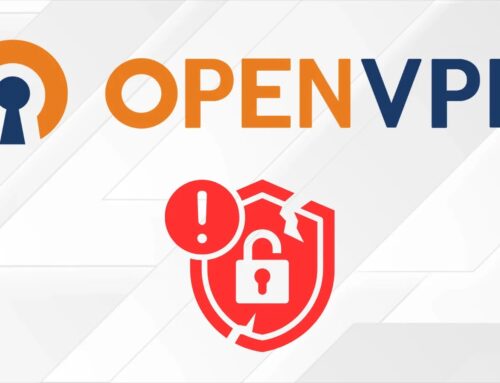
French Retailer Auchan Cyberattack – Thousands of Customers Personal Data Exposed
The digital storefronts we frequent, processing our transactions and housing our personal data, are increasingly lucrative targets for cybercriminals. The recent incident at French retail giant Auchan serves as a stark reminder of this persistent threat. On August 21, 2025, Auchan publicly disclosed a significant cybersecurity breach, compromising the personal data of “several hundred thousand” customer loyalty accounts. This event underscores the escalating vulnerabilities within the retail sector and the sophisticated nature of Advanced Persistent Threats (APTs) specifically targeting valuable customer databases containing Personally Identifiable Information (PII).
The Auchan Breach: A Closer Look at the Incident
The core of the Auchan incident, as disclosed, involved unauthorized access and subsequent theft of data from their customer loyalty program. While specific technical details regarding the attack vector are not yet fully publicized, such breaches often stem from a combination of factors. These can include exposed APIs, unpatched software vulnerabilities, phishing attacks leading to credential compromise, or insider threats. The sheer volume of affected accounts – “several hundred thousand” – indicates a systemic compromise rather than an isolated incident.
This type of breach is characteristic of APTs, which are typically well-funded and highly skilled adversaries employing sustained and sophisticated techniques to gain long-term access to target systems. Their goals often extend beyond simple data theft, potentially aiming for industrial espionage, intellectual property theft, or disruption of critical operations.
Understanding the Impact: Personally Identifiable Information (PII) Exposure
The exposure of PII is a critical concern in any data breach. For Auchan’s customer loyalty accounts, this typically includes data points such as names, addresses, email addresses, phone numbers, loyalty card numbers, and potentially purchase histories. While financial card details are often tokenized or not directly stored with loyalty data, the compromised PII can facilitate various downstream malicious activities:
- Phishing and Social Engineering: Malicious actors can leverage exposed PII to craft highly convincing phishing emails or social engineering attacks, aiming to steal financial credentials, gain access to other online accounts, or perpetrate financial fraud.
- Identity Theft: The aggregation of PII from multiple breaches or public sources can be used to construct a comprehensive profile for full-blown identity theft, leading to fraudulent loan applications, credit card accounts, or even tax fraud.
- Account Takeover: If customers reuse passwords across different services, the exposed loyalty account credentials could lead to account takeovers on other platforms.
Retail Sector Vulnerabilities: A Recurring Theme
The Auchan breach is not an isolated event; it’s part of a disturbing trend of increased cyberattacks against the retail sector. Retailers, with their vast customer databases, extensive supply chains, and often dispersed IT infrastructures, present a rich and complex attack surface. Common vulnerabilities include:
- Legacy Systems: Many established retailers operate with older, less secure IT infrastructure not designed for the modern threat landscape.
- Third-Party Risks: Integration with numerous third-party vendors for services like payment processing, marketing, and logistics introduces additional points of potential compromise if those vendors have weak security postures.
- Insider Threats: While not the primary vector in many APTs, disgruntled employees or those susceptible to social engineering can inadvertently or intentionally expose sensitive data.
- API Vulnerabilities: Poorly secured or configured APIs, common in e-commerce and loyalty programs, can provide direct pathways for data exfiltration.
- Weak Credential Management: Inadequate password policies, lack of multi-factor authentication (MFA) enforcement, and insufficient monitoring for credential stuffing attacks remain significant weaknesses.
Remediation Actions and Proactive Defenses
In the wake of such a breach, immediate remediation is paramount. However, the greater lesson lies in proactive defense. For organizations, particularly those in the retail sector, protecting customer data requires a multi-layered and continuously evolving strategy.
Immediate Post-Breach Measures:
- Incident Response Activation: Implement a well-practiced incident response plan, including containment, eradication, recovery, and post-mortem analysis.
- Customer Notification: Transparent and timely communication with affected customers is crucial, providing clear guidance on steps they should take (e.g., password changes, monitoring financial statements).
- Forensic Investigation: Conduct a thorough forensic analysis to determine the root cause, extent of compromise, and exfiltration methods.
- Legal and Regulatory Compliance: Engage legal counsel to ensure compliance with data protection regulations such as GDPR, CCPA, and notification requirements.
Proactive Security Enhancements:
- Robust Access Controls: Implement strict principle of least privilege. Employ strong authentication mechanisms, including mandatory MFA for all internal and external access to sensitive systems.
- Regular Vulnerability Assessments and Penetration Testing: Consistently scan for and address vulnerabilities in web applications, APIs, and network infrastructure. Utilize tools like OWASP ZAP or Burp Suite for web application security testing.
- Employee Security Awareness Training: Educate employees on phishing, social engineering, and the importance of data security best practices.
- Data Encryption: Encrypt PII at rest and in transit using strong encryption algorithms.
- Network Segmentation: Isolate critical systems and sensitive data from less secure parts of the network to limit lateral movement in the event of a breach.
- Security Information and Event Management (SIEM): Deploy SIEM solutions to aggregate and analyze security logs, enabling real-time threat detection and rapid response to anomalous activities.
- Vendor Risk Management: Vet third-party vendors’ security postures thoroughly before integration and monitor them continuously.
- Incident Response Plan Drills: Regularly simulate breach scenarios to test and refine the incident response capabilities of the organization.
Leveraging Tools for Enhanced Security
Effective cybersecurity relies heavily on the intelligent deployment of various tools. Here are categories of tools relevant to preventing and mitigating breaches like the one experienced by Auchan:
| Tool Category | Purpose | Examples/Key Concepts |
|---|---|---|
| Endpoint Detection & Response (EDR) | Monitors and responds to threats on endpoints (e.g., workstations, servers). | CrowdStrike Falcon, Carbon Black, Microsoft Defender for Endpoint |
| Security Information & Event Management (SIEM) | Aggregates and analyzes security logs for threat detection and compliance. | Splunk Enterprise Security, IBM QRadar, Elastic SIEM |
| Vulnerability Scanners | Identifies security weaknesses in applications and infrastructure. | Nessus, OpenVAS, Qualys VMDR |
| Web Application Firewalls (WAF) | Protects web applications from common web-based attacks. | Cloudflare WAF, Akamai Kona Site Defender, F5 BIG-IP ASM |
| Multi-Factor Authentication (MFA) Solutions | Adds an extra layer of security beyond just a password. | Duo Security, Okta, Microsoft Authenticator |
| Data Loss Prevention (DLP) | Prevents sensitive data from leaving the organizational network. | Symantec DLP, Proofpoint, Forcepoint DLP |
While no single tool guarantees complete protection, a layered approach using these technologies significantly strengthens an organization’s defense posture.
Key Takeaways for Businesses and Consumers
The Auchan cyberattack serves as a critical reminder for both enterprises and individuals. For businesses, especially in the retail sector, continuous investment in cybersecurity, coupled with a proactive and adaptive security strategy, is no longer optional but an absolute imperative. The costs associated with a data breach, both financial and reputational, far outweigh the investment in robust security measures.
For consumers, the incident highlights the importance of vigilance. Regularly changing passwords, using strong and unique passwords for different services, enabling multi-factor authentication wherever possible, and carefully scrutinizing unexpected communications are essential habits in the current threat landscape. Furthermore, consumers should remain alert to any suspicious activity on their accounts and consider credit monitoring services if their personal data has been exposed.
The arms race between cybercriminals and security professionals continues. Staying ahead requires not just reactive measures but a forward-thinking, proactive stance informed by the latest threat intelligence and a commitment to continuous improvement in cybersecurity practices.





